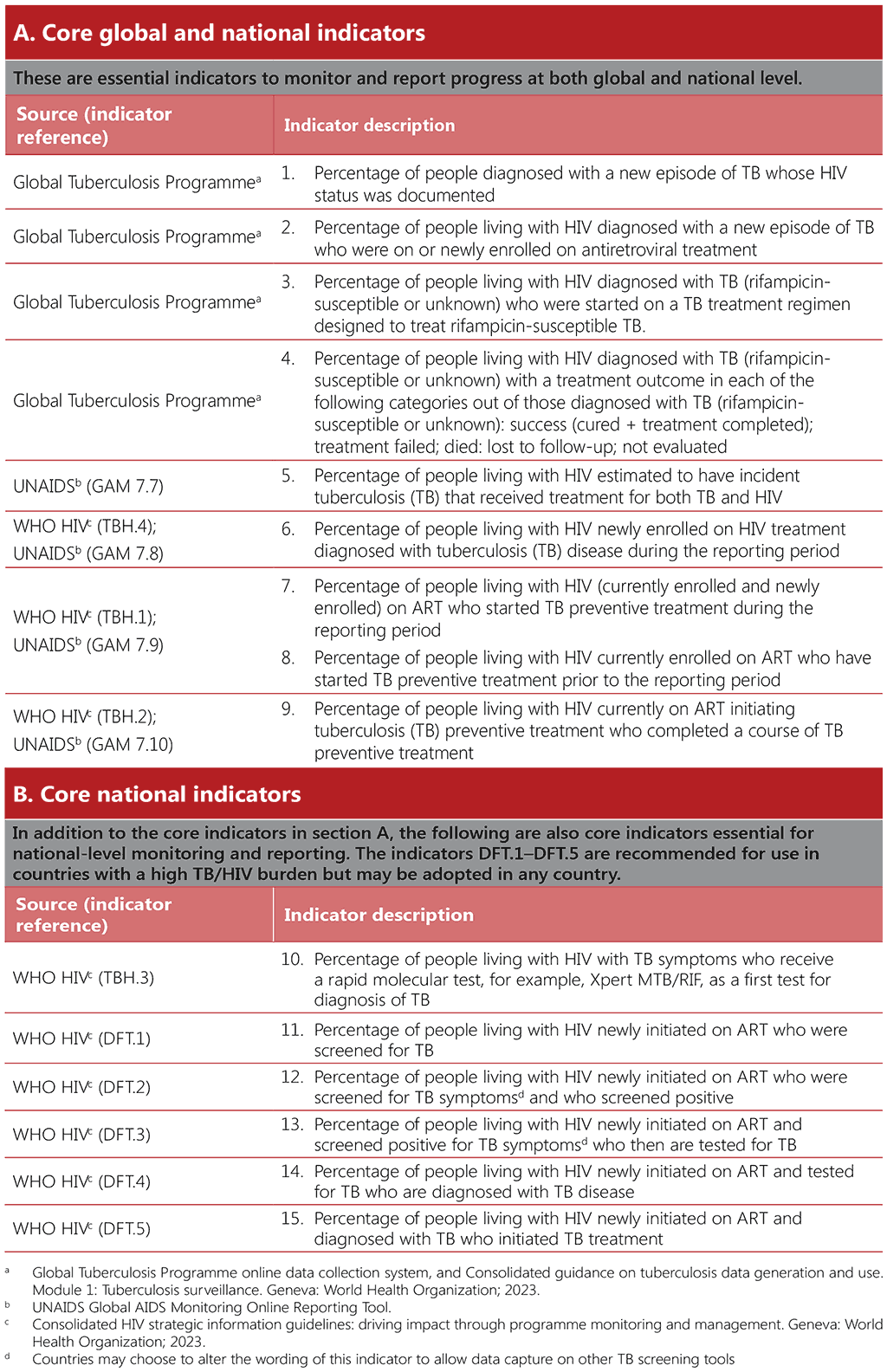كتاب روابط اجتياز لـ 1266
Ongoing monitoring of collaborative TB/HIV activities and evaluation of their impact is critically important for driving scale-up and for monitoring progress and identifying gaps in implementation. This requires an effective and efficient monitoring and evaluation system.
Table A1.1 summarizes the core indicators recommended for monitoring and evaluating collaborative TB/HIV activities. The indicators are categorized as core indicators for global and national monitoring and reporting, and core indicators for national-level monitoring and reporting only.
Table A1.1 Summary of indicators for monitoring and evaluating collaborative TB/HIV activities

Core indicators for global and national monitoring and reporting
These indicators measure the efforts made by countries towards prevention, early detection and prompt treatment of HIV-associated TB along with its impact on mortality. Systematic measurement and reporting of these indicators is critical for monitoring the coverage of services and impact of collaborative TB/HIV activities nationally, and also provides insights into global progress. This information can be used in the process of global and national strategy development, programme planning, and resource mobilization and allocation. The data elements required for documentation of these indicators should be routinely captured in the national health management information system or the management information system of the national TB programme (NTP) or national AIDS control programme (NACP). They should be periodically reported at national and subnational level and consolidated annually for global- and national-level reporting.
Core indicators for national-level monitoring and reporting
In addition to the indicators mentioned above, a set of core indicators is required for routine monitoring of implementation of collaborative TB/HIV activities at national level, particularly the quality of care provided. Ongoing monitoring of these indicators is necessary for effective programme management at national, subnational and facility level, as they help in identification of weaknesses in programme implementation and thus facilitate improvement. Data required to measure these indicators should be captured systematically on a regular basis and should be an integral part of the national health management information system or the management information system of the NTP and NACP. The indicators referenced DFT.1–DFT.5 help to measure the cascade of TB diagnosis and care and are recommended for the 30 high TB/HIV burden countries as identified by WHO. However, these indicators may also be used by other countries.
Other indicators to support quality delivery of TB/HIV programme and services can be found in A guide to monitoring and evaluation for collaborative TB/HIV activities – 2015 revision.

 تعليق
تعليق